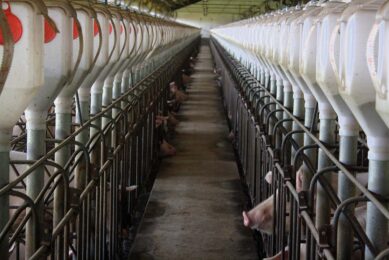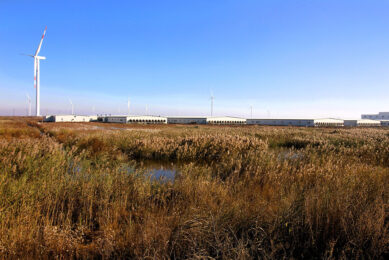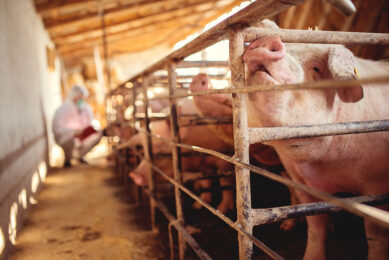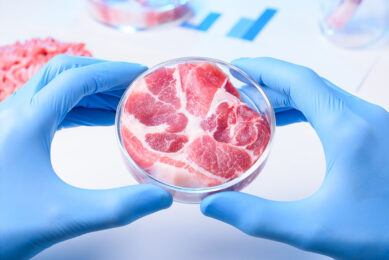12 Trends in livestock production and meat consumption
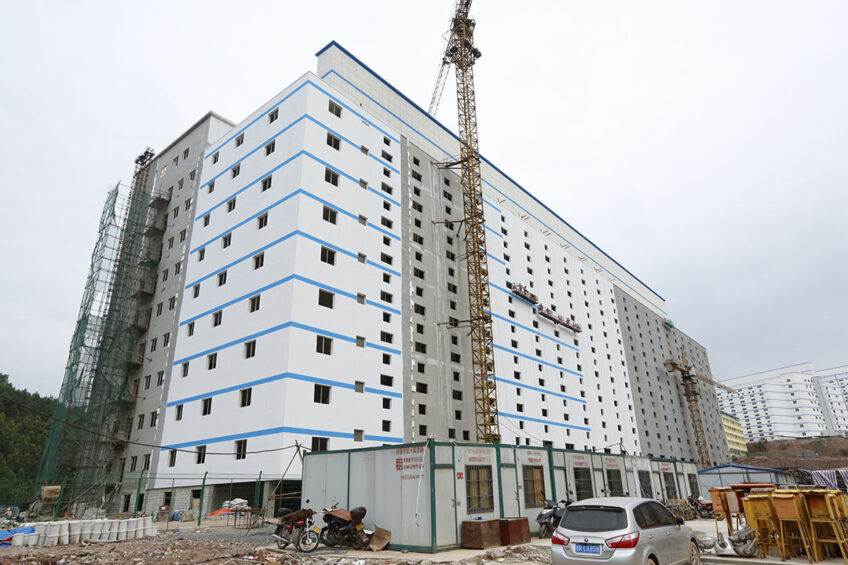
Pig Progress editor Vincent ter Beek delved into 12 trends in livestock production and meat consumption that he shared with an audience of veterinarians at the ESPHM in Thessaloniki, Greece on May 31st.
The world of swine production is in constant motion. Developments continue to occur, influences happen from all kinds of directions, and bigger pictures come and go. When asked to identify “trends” in livestock production and meat consumption, they suddenly appeared to be plentiful. The Oxford Advanced Learner’s Dictionary said, “A trend is a general direction in which a situation is changing or developing.” Perhaps not the most scientific source, but Wikipedia added to that, “A trend is a form of collective behaviour in which a group of people enthusiastically follow an impulse for a short period.”
That reference to collective behaviour narrowed down the quest quite a bit, as a difference ought to be made between “themes” and “trends”. Themes are general subjects, important to all, which may determine doing and thinking. Think of concepts like “food security”, “population growth”, “increased wealth”, “feed safety”, “inflation”, “war in Ukraine”, or “animal health”. Trends are the answers to all that.
For this overview, in total 12 trends have been selected. Some may be occurring locally, whereas others will be applicable globally. Some will have a profound impact on future swine production and consumption, others will provide inspiration to take a different approach. Several trends can be at odds with each other and none of these should be considered as “advice” for producers. The list has been constructed alphabetically, so one is not more important than the other.
View the complete ESPHM presentation here (PDF).
 Anticipating climate change
Anticipating climate change
This topic is rather wide, but an undeniable one – and something each producer in the world will have to learn how to deal with to his or her advantage. Some producers may feel only a limited impact, whereas others my end up having wet feet or feeling the heat more than before. It is good if producers have a plan ready what to do to make sure that water or energy will continue to be plentifully available, if feed availability and feed prices will rise – and on the contrary, how to become more versatile profiting from additional sun hours using solar panels.
 Applying precision technology
Applying precision technology
Precision technology may well be the answer to make each pig live up to its potential. No longer providing care for the average pig, but tailor-made, pig-specific attention. Technology can help on the management side, with ingenious programmes taking care of ventilation and feeding systems, but also on the observing side, with sensors picking up signals from the pig house long before humans would pick them up. Precision feeding can make sure each pig will get exactly the right amount of feed for its age and breed, precision health applications can detect diseases much easier and in China, AI solutions are even trying to venture into individual pig recognition.
 Building multistorey
Building multistorey
A relatively modern solution that is mostly being applied in China to this date. Pig houses being placed on top of each other – the tallest project so far counting up to 26 layers altogether. The initiatives appear to be plentiful and are popping up all over the country. In the context of China being very crowded, a population that needs feeding with safe food, whilst not using vast amounts of land, building multistorey may appear a logical solution. But what does it mean for biosecurity? Manure issues? From a Western perspective, social acceptance would be an issue too. In China, the ethical questions do seem to play a smaller role, making them pioneers in this development.
The success of biosecurity comes with mentality, awareness and transparency for those on-farm
 Enhancing biosecurity
Enhancing biosecurity
In recent years, PED, PRRS or ASF have made it crystal clear that biosecurity can make or break the success of a farm. Even fairly simple measures like the use of insect nets can already be a good first step to keep out infections. The success of biosecurity, however, comes with mentality, awareness and transparency for those on-farm. It takes good knowledge and understanding what the “enemy” is and how it moves. Without that, any attempt to enhance biosecurity will fail. Another challenge for countries where freedom of speech is sometimes falling victim to other considerations. Biosecurity does not only apply to pig farms, but also to processing facilities, as we all have seen during Covid-19.
 Going organic
Going organic
A trend that is at odds with the one described above – and that is producers going organic. Obviously, in a market with is increasingly critical to the way pig production is organised, some pig producers reach the conclusion that for them it works best if the pigs can go outdoors, spread their legs, get fed only organically grown ingredients. The trend can come with marketing organically produced meat all the way up to consumers, who are happy to pay a premium when they know that the pigs have been allowed to live a good life. Whether or not this method will feed planet Earth is questionable, yet its lessons and inspiration could have a message for all pig producers.
 Keeping tails and testicles
Keeping tails and testicles
A trend that can be observed mostly in Europe, and perhaps one that may not appear to be that important, but will hold a clue to the future “licence to produce” for swine producers. Questions of tail docking and castration have been receiving growing amounts of attention in Europe and plenty of research is being carried out, in an attempt to avoid these practices. Progress is slow as this involves finding a solution to tail biting and boar taint. Yet it all boils down to the question – if pigs don’t thrive well in our systems, perhaps the system needs adjusting rather than the pigs. The end result could lead to different choices in farm design, feeding and farm management.
 Lowering emissions
Lowering emissions
Not only animal welfare movements play a role in future pig farming, so does the environment. Pig farms, after all, have another output apart from meat – and that is the emission part. Dust particles, odour, ammonia, excessive zinc, phosphorus, you name it. In recent years, that list has only grown as in densely populated areas nitrogen emissions have become a growing problem – pig producers in Belgium and the Netherlands can tell all about this. Perhaps one can say – so what, this is just a situation of a lot of people living together with too many regulations. Still, it’s vital to observe it.
 Producing antibiotic-free (and no ZnO)
Producing antibiotic-free (and no ZnO)
This trend started about 20 years ago in Northern Europe with an attempt to reduce the use of antibiotic growth promoters as its use would encourage antibiotic resistance. Global awareness grew that prudent use of antibiotics is essential – and increasingly, even the curative use of antibiotics is now being applied as carefully as possible. Developments, however, are different from country to country. Where some are clamping down on its use and have transparent models, in other countries, antibiotics are still freely available over the counter. The development has had its most profound impact in weaner pigs, where the usage of antibiotics was traditionally the highest. In Europe, New Zealand and Canada, the additional component the reduction of pharmacological levels of zinc oxide plays a role. All in all, the developments will continue to lead to a proper re-thinking of how (weaner) pigs are kept and fed.
The trend has now expanded to the lactation crates, with European directives also pointing in the direction of giving sows freedom for most of their time in the lactation house
 Providing space to sows
Providing space to sows
Another trend that has been going on for many years and will extend in the next decade, with very serious implications for how farms have been set up. It all started with a ban on the use of gestation crates – to allow the sows to walk freely. In the USA, Prop 12 is a never ending source of debate. The trend has now expanded to the lactation crates, with European directives also pointing in the direction of giving sows freedom for most of their time in the lactation house. The consequence of this is that farrowing pens will need to be larger in their set-up, requiring producers to scale down the number of sows on their farms – or to expand to provide space to all sows. Research is on the way to figure out how to overcome the problem of crushing.
 Replacing meat
Replacing meat
A trend that might sound worrisome for some and provide an opportunity for others. With a growing global population, the question may no longer be: “how can we all feed them with animal protein?,” but rather, “how can we all feed them protein?” In that case, rather than replacing meat, different sources of proteins may just become complementary. Perhaps it will lead to pork becoming more of a luxury product? What is on the shelves in the supermarket may be about to change fundamentally.
 Searching soy alternatives
Searching soy alternatives
This topic goes a touch deeper than only the environmental argument. One reason to stop using soy in swine feed is that it has to be trucked from Latin America. Having feed produced for pigs on the other side of the world may not be the most sustainable, but in case this also leads to deforestation, the industry has a serious image problem as well. Plus, in times of war and uncertainty, like with the situation in Ukraine these days, and ever-growing feed prices, would it not make much more sense to see if protein sources for our livestock can be sourced more locally? If pork production occurs in areas where there is no soy available, why not try to opt for alternatives?
 Using social media
Using social media
Last but not least, an underestimated topic, but nonetheless very relevant. Social media are increasingly being used to share someone’s opinions. For the swine industry, social media constitute a threat and an opportunity. It is time for the industry to grab that opportunity, to share what is being done and do so with pride. Obviously, it does not mean they are going to win everybody’s hearts, but reporting transparently means that producers are committed and proud. And that they are happy to show anything that is going on inside a pig house to the outside world – a convincing reason that in the long run it is vital for the industry to stop castrating, tail docking and using crates.
Interestingly, China has created a social media climate for itself. WeChat and Weibo are specific for the Chinese market, using characters. The Chinese themselves cannot access platforms like Facebook, Twitter or Instagram, cutting themselves off from developments going on outside China. Conversely, as characters are being used, the world of social media in China remains relatively unknown to the outside world as well.
These are 12 trends, determining where the industry is going in the years to come. There are a few general comments to make:
Opportunities for swine production around the world are plentiful, in many areas there is a growing demand to meat.
At the same time, there are limits to growth. Increasingly, swine production realises that pig production has a profound impact on the world around it and awareness about that is essential to keep a licence to produce.
Self-control is better than be controlled.
Knowledge how to farm better can be shared with others.
Last but not least: China is trending in a different direction than the rest of the world.



